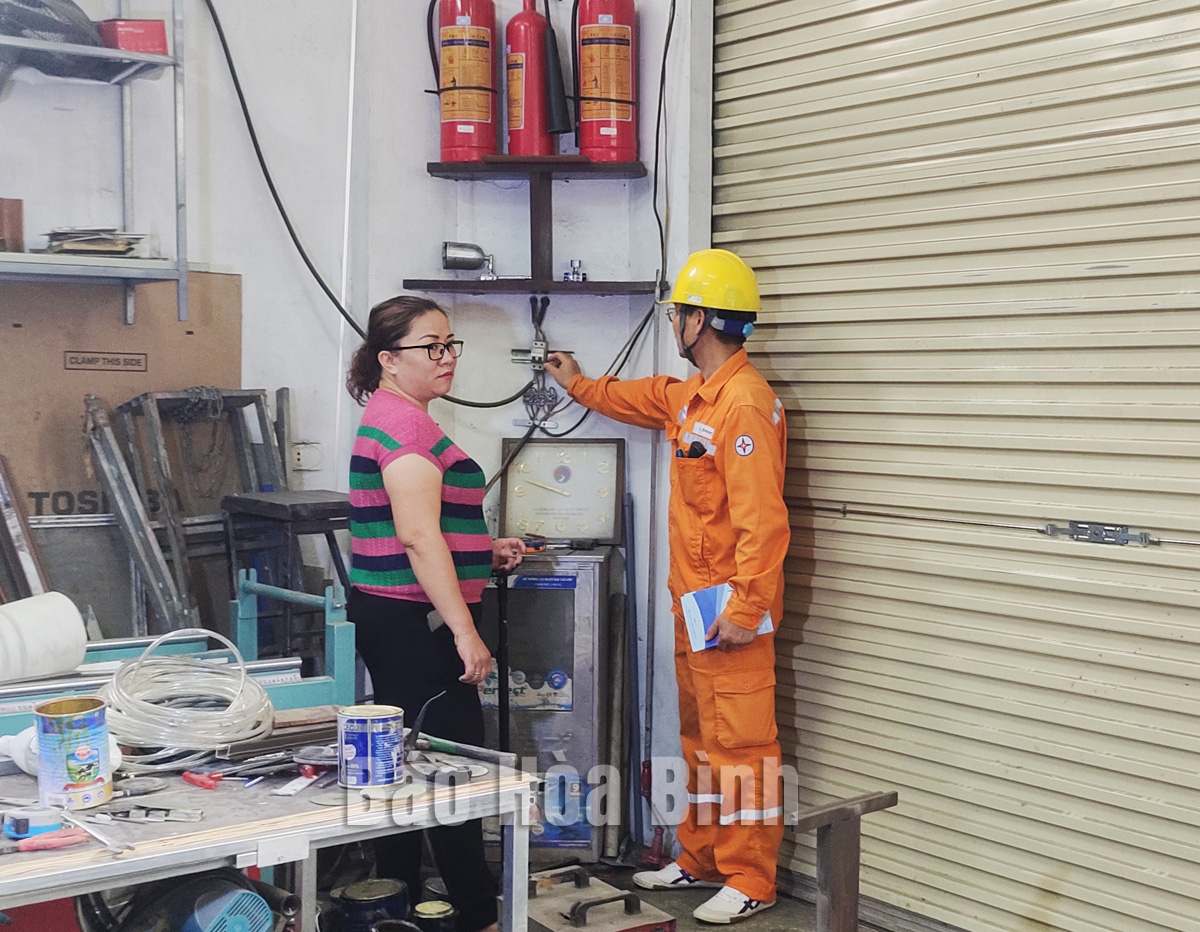
(HBO) – Electricity demand often surges in the hot season, posing the risk of grid overload. To ensure stable power supply in the hot season, the Hoa Binh Power Company (PC Hoa Binh) has taken various measures, including encouraging efficient electricity use.
A staff member of the Hoa Binh Power
Company guides a client how to use electricity efficiently and safely in the
hot season.
Data from PC Hoa Binh show that although the
strong heat wave in early May lasted for only three days, the electricity
consumption in Hoa Binh province increased sharply. Notably, the power consumption
provincewide at 9:30pm on May 6 reached over 245.7 MW, up 19.9% from the same
point of time on May 4.
The northern region of Vietnam is forecast to
experience peak heat waves from May to July, and power consumption in Hoa Binh
also is predicted to continue soaring. Therefore, power supply is likely to
encounter many difficulties, leading to the need for efficient energy use
during summer months.
Facing that fact, PC Hoa Binh has devised
different plans to minimise power cuts and guarantee stable supply.
Tran Thi Ut, head of the company’s marketing
division, said one of important measures for ensuring stable power supply in
the hot season is calling for efficient energy use from customers.
Over the past months, the firm has stepped up
communications and guidance for customers on how to use electricity
efficiently, especially via its website and Facebook and Zalo fanpages. It has
also held working sessions with big customers engaging in industrial production
to persuade them to save electricity on the days with extreme heat and during
peak hours, particularly in summer months.
This will not only help customers avoid high
power bills but also contribute to the safe and stable power supply for
economic and daily activities, especially in the hot season of 2023, she
added./.
More than just an information technology teacher, Bui Van Nien is an inspiring figure who has nurtured the scientific curiosity and creative spirit of students in Vietnam’s ethnic minority communities.
Da Bac is the most disadvantaged mountainous district in Hoa Binh province, with ethnic minorities accounting for about 90% of its population. Over the past years, the district has mobilised resources to implement ethnic policies to improve the quality of life of local people.
In recent years, Hoa Binh province has consistently prioritised the protection, care, and education of children, particularly those from ethnic minorities and disadvantaged backgrounds, by creating a safe, healthy, and nurturing environment for their all-round development.
The Steering Committee for Tobacco Harm Prevention and Control of Hoa Binh province, in coordination with the Tobacco Harm Prevention and Control Fund, held a ceremony on May 28 in response to the World No Tobacco Day (May 31) and the National No Tobacco Week (from May 25 to 31). The event was chaired by Nguyen Van Toan, Standing Vice Chairman of the provincial People’s Committee and head of the Steering Committee.
Since 2021, the Center for Industrial Promotion and Industrial Development Consulting (CIIDC) under the Department of Industry and Trade has been implementing a school lighting model as part of the plan for using energy efficiently and economically in Hoa Binh Province in the pẻiod of 2021 - 2025. This model not only aims to improve the learning conditions and enhance the education quality, but it also promotes the message of energy saving, energy security, environmental protection and contributes to the goals of socio-economic development.
In the 2024 - 2025 school year, the entire Hoa Binh provincial education sector includes 520 educational institutions and schools. Among them are 13 ethnic boarding schools with 153 classes and 4,487 students. Four of these schools have met national standards, reaching 30.7 percent.



